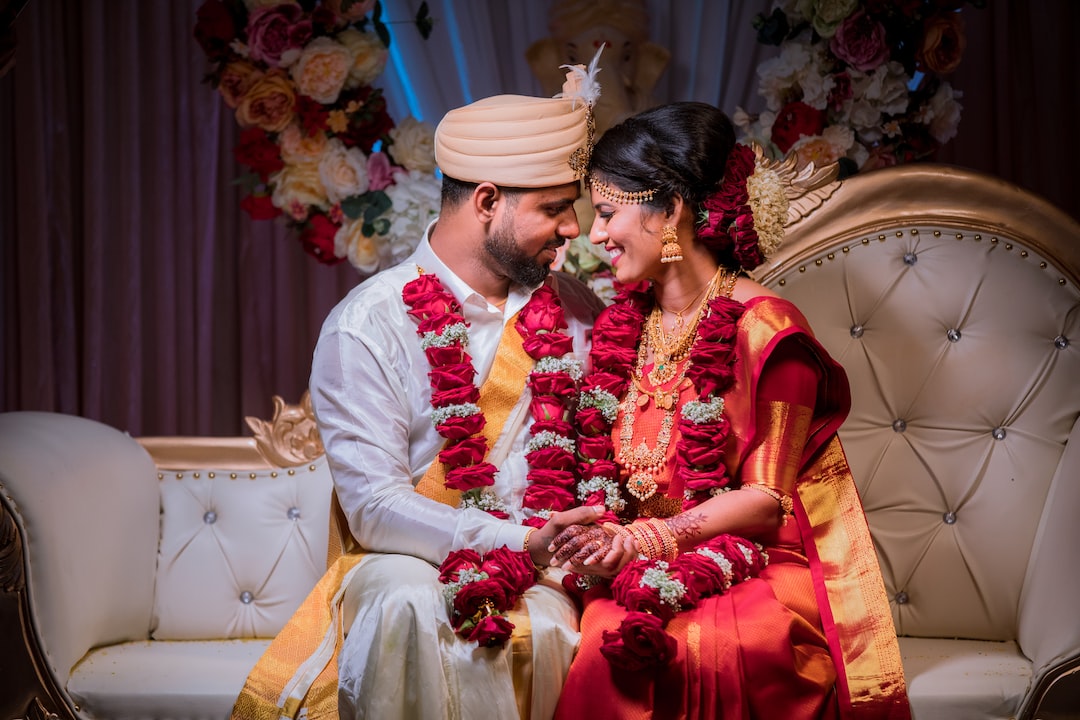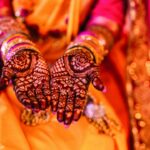When it comes to Hindu weddings, there’s no denying the importance of dress. From traditional wedding gowns and saris to regional variations in color and style, hindu wedding dress traditions can vary greatly depending on where you’re celebrating your nuptials. Whether you’re looking for a classic design or something with more modern flair, this guide will help you find the perfect look that reflects both culture and fashion. With tips on popular styles of Hindu wedding dresses as well as information about how colors are used symbolically within these traditions, get ready to explore all aspects of hindu wedding dress traditions like never before.
Hindu Wedding Dress Traditions
Traditional Hindu Wedding Dress
When it comes to traditional Hindu weddings, the dress is an important part of the celebration. The bride and groom’s outfits are usually brightly colored and heavily embroidered, with intricate details that symbolize love and fertility.
Bride’s Outfit:
A typical Hindu bride will wear a sari or lehenga choli for her wedding ceremony. Saris are long pieces of fabric draped around the body in various styles, while lehengas are skirts paired with a blouse or crop top. Both garments can be made from silk, cotton, georgette, crepe or velvet fabrics in bright colors like red, pink, orange and yellow. They may also feature heavy embellishments such as zardozi work (embroidery), sequins and stones to make them look more festive. Accessories such as bangles and necklaces add even more color to the outfit.
Groom’s Outfit:
The groom typically wears a sherwani which is a long coat-like garment worn over trousers called salwar kameez or dhoti pants depending on regional variations in style. It can be made from materials like silk brocade or velvet with detailed gold embroidery along the edges for added effect. To complete his look he will often wear colorful turbans decorated with jewels as well as accessories like rings and bracelets that match his outfit perfectly.
Accessories play an important role in traditional Hindu weddings as well. Brides often wear elaborate headpieces called maang tikkas, which have strings of pearls attached to them along with jhumkas (earrings) that dangle down their ears delicately. They may also carry garlands made out of flowers during certain rituals for good luck. Grooms usually sport ornate pagris (turbans) adorned with precious stones while groomsmen might don colorful safas (headgear). In addition to these items, both parties may exchange garlands during ceremonies known as Jai Mala, which signify unity between two families coming together through marriage.
Regional Variations in Hindu Wedding Dress
North India:
North Indian wedding dresses are typically characterized by bright colors and intricate embroidery. The bride usually wears a red or maroon lehenga, which is an ankle-length skirt with a long blouse and dupatta (scarf). The groom often wears a sherwani, which is an ankle-length coat that buttons down the front. Both the bride and groom may also wear accessories such as jewelry, turbans, and juttis (traditional shoes).
South India:
South Indian weddings feature more muted colors than those in North India. Brides typically wear sarees made of silk or cotton fabric with gold embroidery work. Grooms often wear dhoti kurtas, which are white knee-length shirts paired with traditional dhotis (loose trousers) in contrasting colors like yellow or green. They may also accessorize their outfits with veshtis (long cloths draped around the waist), shawls, and pagdis (turbans).
East Indian weddings have some similarities to both North and South Indian ceremonies but also feature unique elements of their own. Brides usually opt for traditional saris made from fine fabrics like silk or georgette adorned with heavy zari work on the borders. Grooms generally choose to wear kurta pajamas paired with Nehru jackets along with colorful turbans called pagris that are decorated with flowers or jewels depending on regional customs
Color Symbolism in Hindu Wedding Dress
Red and maroon are two of the most popular colors for Hindu brides. Red is seen as a symbol of fertility, prosperity, and good luck. Maroon is often used to represent strength and courage. Both colors can be found in traditional Indian wedding dresses such as lehengas or sarees. Gold and silver are often seen on grooms’ outfits, representing wealth, power, and prestige. Other colors may also be used to convey certain meanings or beliefs; for example, yellow represents knowledge while green stands for peace.
Patterns may also play an important role in Hindu weddings; intricate embroidery designs like paisleys or lotus flowers can be found on many traditional garments. These patterns typically have spiritual significance: the lotus flower is associated with purity while paisley designs symbolize eternity and everlasting love between couples. Floral motifs like roses or lilies are also common choices that represent beauty and joyfulness during this special occasion.
Bridesmaids’ dresses may feature bright shades of orange or purple which denote creativity and enthusiasm respectively, perfect attributes when it comes to helping plan a wedding. Groomsmen’s suits might include lighter tones such as light gray which conveys intelligence while navy blue reflects trustworthiness; both qualities essential in any successful marriage.
Popular Styles of Hindu Wedding Dresses
Lehenga Choli Style:
The lehenga choli style is one of the most popular styles for Hindu weddings. It consists of a long skirt, usually with intricate embroidery and embellishments, paired with a short blouse or choli and a dupatta (long scarf). This look is often accessorized with jewelry such as bangles, necklaces, earrings, and nose rings. Brides typically wear red or maroon colored lehengas while grooms may opt for more muted colors like beige or gold.
Saree Style:
Sarees are another traditional option for brides on their wedding day. A saree is essentially an unstitched piece of fabric that can range from five to nine yards in length depending on the region it’s from. It’s draped around the body in various ways to create different looks ranging from simple to ornate. Popular fabrics used include silk, cotton, georgette, crepe etc., which come in various colors and patterns like floral prints or stripes. Gold accents are also common when wearing sarees for weddings as they add an extra touch of elegance to the look.
Anarkalis are floor-length tunics that have become increasingly popular over time due to their versatility and comfort factor; they can be dressed up or down depending on the occasion. They feature intricate embroidery work along the neckline and hemline, making them perfect for special occasions like weddings where you want your outfit to stand out amongst others at the event. Colors vary but pastel shades such as pink and blue tend to be favored by many brides who choose this style for their big day.
Conclusion
Hindu wedding dress traditions are a unique and important part of any Hindu wedding. From traditional to regional variations, the colors used in these dresses have deep symbolism. Popular styles such as lehengas, saris, and salwar kameezes can be seen at many weddings. No matter what style you choose for your special day, make sure it reflects your own personal style while still honoring hindu wedding dress traditions.




